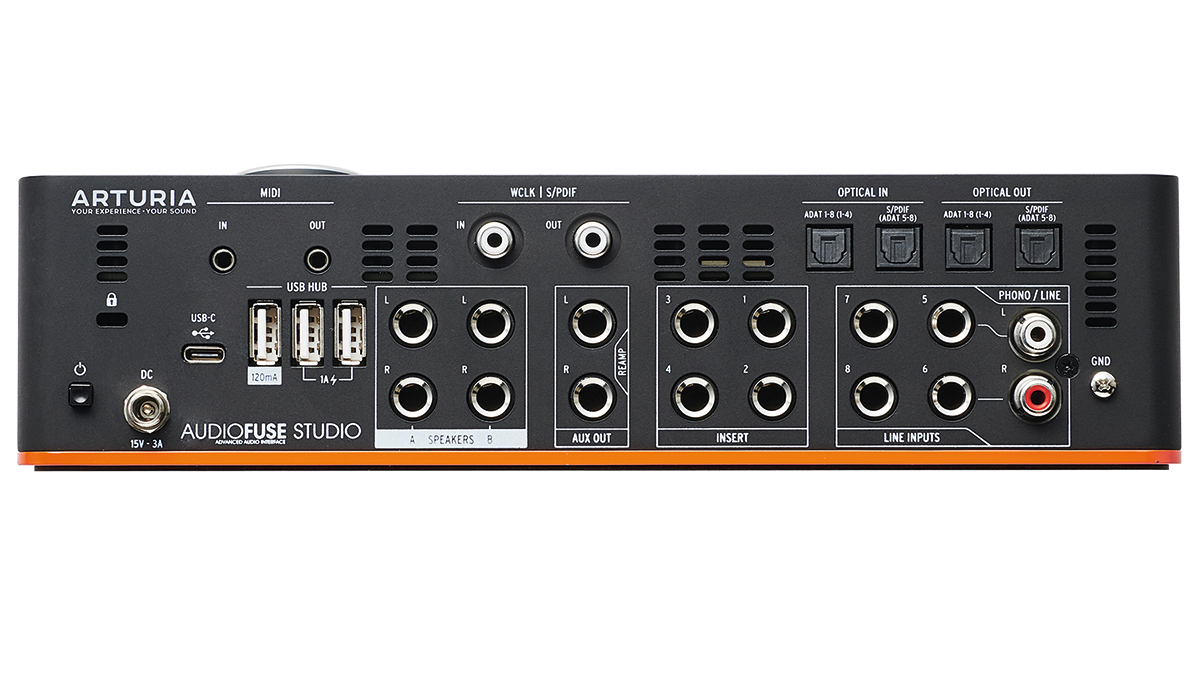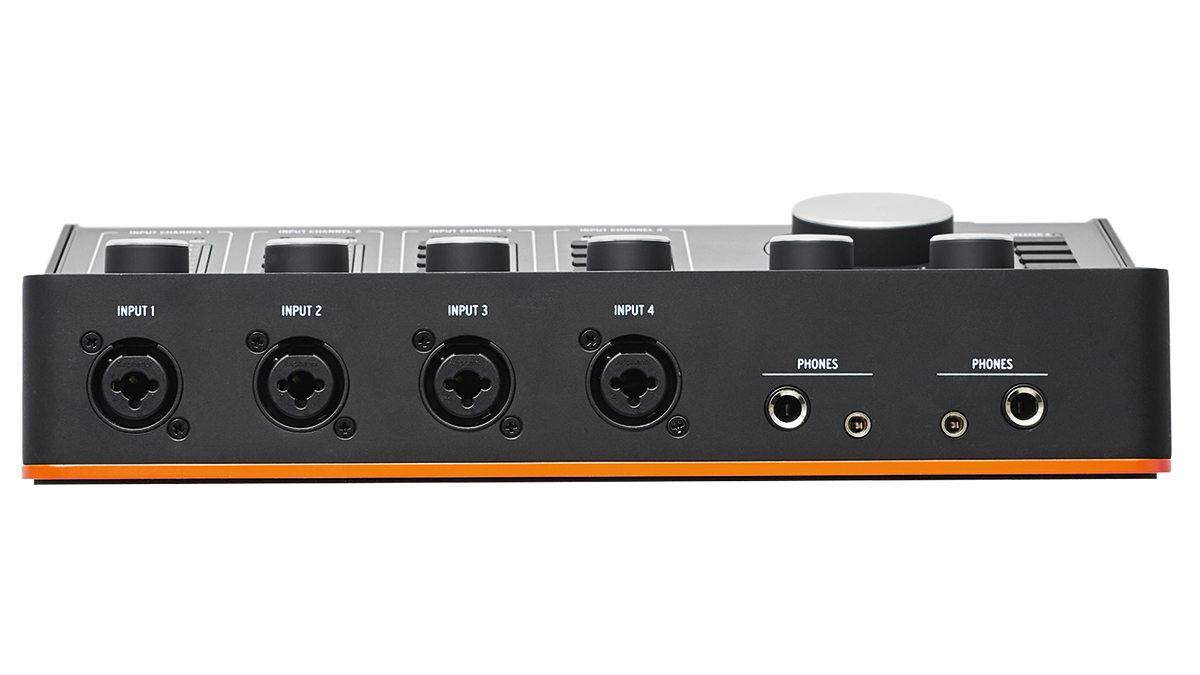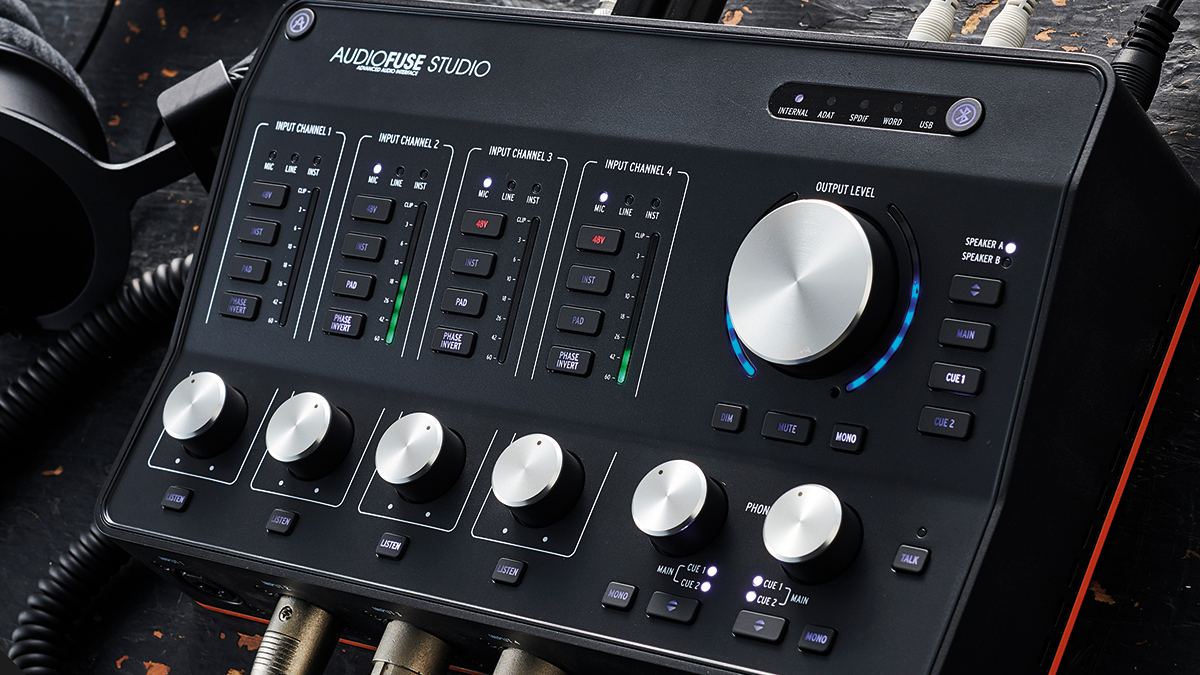MusicRadar Verdict
One of the most future-proof interfaces we’ve seen in a while with plenty of options for all your studio needs, even the ones you didn’t think you had.
Pros
- +
Flexible signal routing
- +
Dedicated reamping channels
- +
Bluetooth
- +
Great bundled software
Cons
- -
Pre-fader listen only available for one channel at a time without using software
MusicRadar's got your back
What is it?
It feels like Arturia’s AudioFuse Studio has been a long time coming. We first saw the Studio version of the Grenoble-based firm’s audio interface at the Winter NAMM show back in 2019 and that was two years after we reviewed the original AudioFuse. Which, we hasten to add, was announced to the world two years before that in 2015. But despite a whole five years elapsing since the series was first announced (a long time in tech terms), the AudioFuse range still feels fresh and new territory for Arturia.
The desktop unit features four Discrete Pro preamps fed by four front-mounted mic/line combi ports. While channels five to eight are served by TR ports around the back, with channels five and six also giving you the option of phono ports, should you need them. The analogue inputs don’t stop there, the unit is equipped with four line-level inserts on the first four channels. In terms of outputs, channels one to four are reserved for two sets of speaker outputs, while five and six double as aux outs but can also be switched for reamping guitars and effects. Returning to the front of the unit and we see two headphone channels each with two source selection, volume controls and both 1/4 inch and 3.5mm sockets.
As for digital connectivity, the Studio does not disappoint. You get double the ADAT ins and outs to handle eight channels up to 96kHz sample rate. We find the same three-port USB 2.0 hub as the smaller AudioFuse interface and 3.5mm MIDI I/O with DIN plug breakout cables. There’s also Wordclock and SPDIF coaxial connections and the unit is rounded off with the inclusion of a Bluetooth receiver featuring aptX and AAC support.
- Our pick of the best audio interfaces for production
- The best budget audio interfaces: start recording for under $120/£100



Performance and verdict
Fresh out of the box and we were immediately impressed with the inclusion of cables, something that too many companies scrimp on. And these aren’t your average Amazon Basics- looking ones either, we’re talking proper colour-matching, braided jobbies. Aesthetics aside, the fact that both USB-C to C and C to A cables are a plus.
All of the signal flexibility and extra features aside, at the heart of any audio interface, is the sound and you’ll want it to be as accurate as possible, which the Discrete Pro preamps deliver. Our old ears couldn’t detect any distortion even at higher volumes and the transparency leaves you the option to add your own colour. Which just so happens to be catered for in the form of the Creative Suite plugin bundle; featuring classic channel strip emulations and iconic effects, as well as a Lite version of Analog Lab.
The four preamp channels each have phantom power, pad and phase invert options, generous metering and there are also individual pre-fader listen buttons. These only allow you to hear one channel at a time, although it would’ve been nice to be able to hear all four without needing software.
- Kit out your studio with the best studio monitors
- These are the best PCs for music production
- Organise your recording space with the best studio desks
In terms of flexibility, the Studio delivers on all counts. The AudioFuse Control Centre software lets you get under the hood and configure all the routing options to your project’s needs with ease, including the ability to loopback the main mix, or either cue mixes. Bluetooth is a great touch, especially with the option to route the signal into your DAW and not just your studio monitors. The AudioFuse Studio also features a Control Center launch button to save you time and you’ll find every control adorning the unit is also accessible within the software.
Want all the hottest music and gear news, reviews, deals, features and more, direct to your inbox? Sign up here.
While it might seem to slot in between the other two AudioFuse interfaces on paper, in terms of size and I/O count, the Studio is €200 more than the 8pre, making it the flagship model in the range. But that price point is entirely justified with its rich set of useful features, flexible signal routing and quality preamps.
MusicRadar verdict: One of the most future-proof interfaces we’ve seen in a while with plenty of options for all your studio needs, even the ones you didn’t think you had.
The web says
"AudioFuse Studio is a joy to use, and its results are top-notch. There’s just so much power and flexibility on offer that it’s hard to think of anything that many producers would realistically need to do that it couldn’t handle."
Ask.Audio
"Trying to please everyone is often a risky strategy but Arturia is giving us all plenty to work within the AudioFuse Studio. "
Production Expert
"Overall, the Studio is another hugely impressive offering from Arturia, who are now firmly established as a major player in the interface world."
Juno Records
Hands-on demos
Ave Mcree
BoBeats
Loopop
Specifications
- Type: 18-in, 20-out desktop USB 3.0 audio interface
- Key features: 4 Discrete Pro preamps with 4 inserts. 2 reamping outputs. Bluetooth (aptX and AAC). 3-port USB 2.0 hub. MIDI in and out. 2 speaker outs with A/B switching. 2 headphone outs with 2 switchable cue mixes. AudioFuse Control Center software and Creative Suite plugin bundle included
- Contact: Arturia
Future Music is the number one magazine for today's producers. Packed with technique and technology we'll help you make great new music. All-access artist interviews, in-depth gear reviews, essential production tutorials and much more. Every marvellous monthly edition features reliable reviews of the latest and greatest hardware and software technology and techniques, unparalleled advice, in-depth interviews, sensational free samples and so much more to improve the experience and outcome of your music-making.

